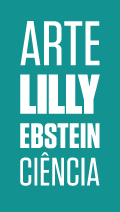O Instituto Biológico
AND THE FIGHT AGAINST THE COFFEE BORER
-
 Lilly Ebstein | Clique para ver +
Lilly Ebstein | Clique para ver + -
 História | Clique para ver +
História | Clique para ver + -
 Instituto Biológico | Clique para ver +
Instituto Biológico | Clique para ver + -
 José Reis | Clique para ver +
José Reis | Clique para ver +
Instituto Biológico de Defesa Agrícola e Animal (Biological Institute for the Defense of Agriculture and Animals) was founded in 1927 following the creation of the Commission to Study and Fight the Coffee Borer Pest, which was to study and fight the coffee borer.
A small insect, the coffee berry borer, began attacking the crops in the State in the 30s, risking the main product of the country’s economy. The insect would attack the top of the green berry and reproduce in its interior using the pulp as food for its larvae and nymphs. The bag of coffee, which weighed 45 kilos, would go down to 16 kilos and caused enormous loss to producers.
The Instituto Biológico de Defesa Agrícola e Animal (Biological Institute for the Defense of Agriculture and Animals) was founded in São Paulo in December 1927, following the work by the Commission to Study and Fight the Coffee Borer Pest, formed in 1924, to fight the coffee borer. The Institute used many communication and publicity resources, such as films, press, advertisements, and brochures and booklets to disseminate the methods for fighting the pest that affected coffee. The communication material, which included illustrations, was essential to inform producers in the State and the population at large and enabled identifying the pests. They also taught how to use prophylaxis methods and treatments.
Lilly Ebstein Lowenstein (1897-1966) led a life between science and art, drawing and taking photographs in the fields of Medicine and Zoology. In her work, Lilly combined her technical knowledge of photography and drawing, the study of the sciences and a remarkable talent for aesthetics. She was born in Germany and studied at the Lette-Verein School in Berlin from 1911 to 1914. In 1925, she immigrated with her husband and two children to São Paulo. In 1926, she became an illustrator and photomicrographer at the Illustration and Photography Department at the School of Medicine (USP, as of 1934), which she headed for thirty years after 1932. Lilly collaborated at Instituto Biológico de Defesa Agrícola e Animal (the Biological Institute for the Defense of Agriculture and Animals), from 1930 to 1935, namely in the Avian Pathology Department. A life with art dedicated to the research and dissemination of science.

